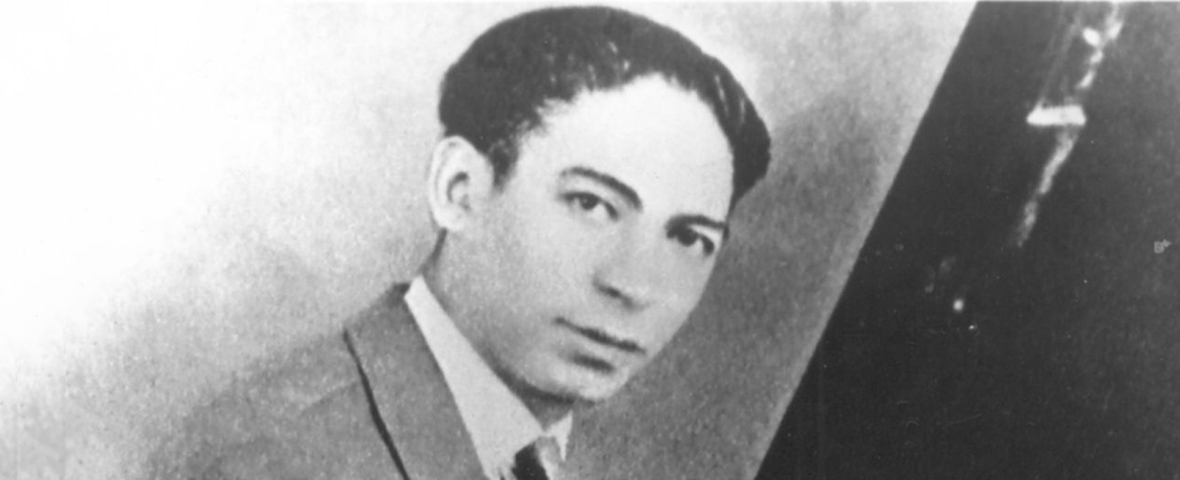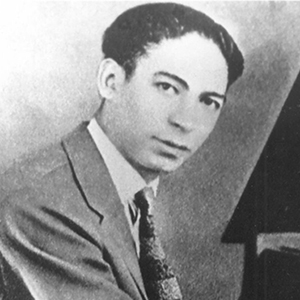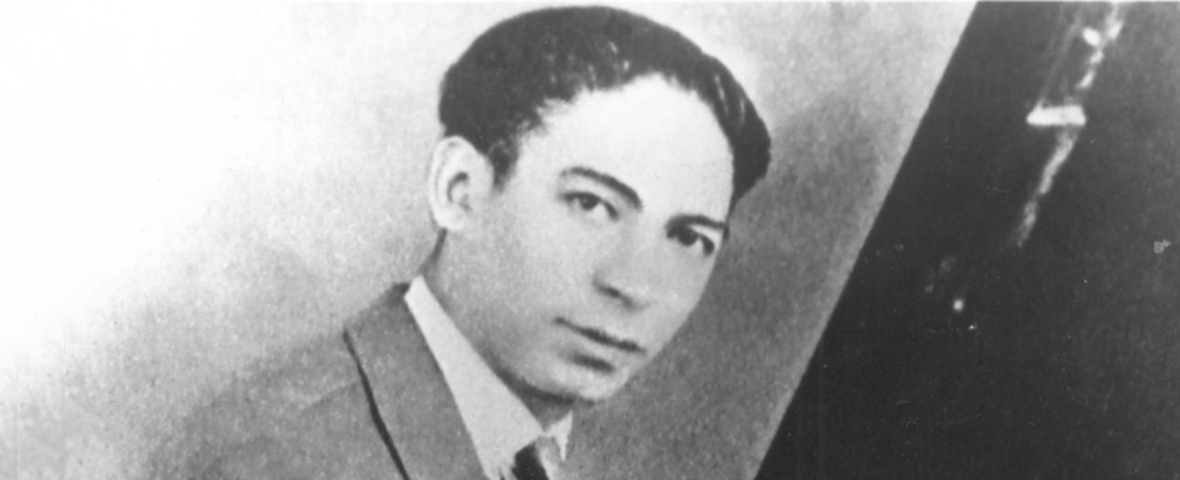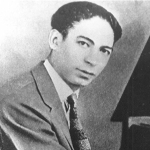No figure stands more impressively tall in the legend and fact of early jazz than the Creole genius known as Jelly Roll Morton (1890–1941). Morton was as amazing a mix of contradictions—of high-mindedness, conceptual brilliance, racial prejudices, and low-down ways—as Thomas Jefferson. New Orleans born, he was the first theoretician of jazz and almost certainly its first great piano player. Light-skinned and inordinately proud of his European blood, Morton was also a full-fledged night creature made for show business: a hustler, a pimp, a card shark, a pool shark, a door-to-door snake oil salesman, a comedian, a sharp shooter, and a wide-traveling rambler. It was due to the itch in his toes that Morton took the ways of jazz here and there as though he were a Johnny Appleseed of rhythm and tune, letting them know how it was supposed to be done.
Morton instructed with confidence because he had been there at the very beginning and was well aware of the change that came when ragtime, perhaps the first urban American music, was supplanted by jazz. He had marched in the parades, sung at the wakes, heard the raw, penetrating blues of the people at the bottom, been in the middle of the brawls, provided background music in the appropriate tempos for the brothel theatrics of love-for-sale, and listened as Buddy Bolden and the others impregnated the air with the brand new sound of a style that was just the other side of the Old Testament of ragtime, one that allowed the individual to make his presence felt through improvisation conceived to work in an ensemble context. Doubtless, Jelly Roll Morton was perfectly qualified to spread the good news of Crescent City musical innovation with impeccable authority.
Many pianists fell before his technique and invention as Morton took them on and often snared their jobs as he kicked up dust on the roads of America after first leaving New Orleans three or four years after 1900. Morton was a veteran of the drill. He would stroll in on those guys who thought they were playing some piano and lay down his challenge, running musicians from keyboards in Mississippi, in Alabama, in Florida, in Colorado, in Missouri, in New York, in California. That’s how it was then: a casual meritocracy in which one held a musical job until demonstrably broken down by somebody better. Morton was especially good at moving around and making a living because he, however hardheaded, also knew how to entertain with quadrilles, rags, waltzes, and popular songs when his audience wasn’t ready for jazz. He was a thorough professional well remembered by all who witnessed his powers, even those in New York who sometimes looked askance at guys coming to town with hay stuck to their clothes or swamp water puddling at their feet. While Manhattan ticklers of the ivories had fine technique because concert pianists had set a standard for execution even outside their idiom, James P. Johnson (1894–1955), who became the grand master of the Harlem school of piano known as “stride,” remembered himself as a young whipper-snapper who was awed upon first hearing the mysterious phenomenon of Morton playing in 1911:
I was taken uptown to Barron Wilkins’ place in Harlem. Another boy and I let our short pants down to look grown up and sneaked in. Who was playing there but Jelly Roll Morton! He had just arrived from the West and he was red hot. The place was on fire! We heard him play his Jelly Roll Blues ... I remember that he was dressed in full-back clothes and wore a light-brown melton overcoat, with a three-hole hat to match. He had two girls with him.
Johnson was hearing the blues, that spiritual bloodstone of the music, brought north by a son of the South. Johnson also remembered the theatrical way Morton proved himself a seasoned showman at his work:
He would take his overcoat off. It had a special lining that would catch everybody’s eye. So he would turn it inside out and, instead of folding it, he would lay it lengthwise along the top of the upright very solemnly as if that coat was worth a fortune and had to be handled very tenderly. Then he’d take a big silk hankerchief, shake it out to show it off properly, and dust off the stool. He’d sit down down then, hit his special chord (every tickler had his special trademark chord, like a signal) and he’s gone!
In essence, whether traveling or staying put, playing with charisma or showboating, Morton was an example of how important homemade musicians were to the early years of the idiom. He was from the street, down in the bottom, one foot in the gutter. That is not to say that there wasn’t a complex of techniques and nuances demanded of the professional, but that Morton arrived in the period when jazz was so new that there were no formal situations in which one could study the craft, no courses, no lesson plans, no homework assignments. Musicians then had to learn from masters, from listening, from working on things at home that they tried out in jam sessions, deducing what they should continue to wrestle with or discard. Everything they grasped, however they got it, was brought into the realm of an art gradually refined to express the sensibility of a new century. Theirs was an idiom that reached down into the gutbucket of the backwoods and crossed that elemental experience and wisdom with the smarts of the big city and what trickled out of the academy. Jazz fused grit and sophistication with such beguiling communication that legions of musicians and listeners were drawn to it.
No matter his feeling that darker-skinned Negroes were “dumber than two dead police dogs buried in somebody’s backyard,” the diamond fillings in teeth, his pistol-packing, his con man inclinations, his obsessive bragging, his relentless claim that he, alone, invented jazz, Morton was, above all, a worldly man who best understood how all of the strands from the concert stage, Negro spirituals, folk tunes, marches, ragtime, popular songs, street chants, blues, and improvisation could be brought together. Morton figured out how to make the written and improvised reinforce each other, bringing the tension between preconceived and spontaneous variations into aesthetic continuity. The beauty, ingenuity, lyricism, heat, and precision of Morton’s 1926 recordings with his Red Hot Peppers made it obvious that he was the compositional grand master of his moment. Morton knew exactly how he wanted the music to sound and rehearsed the chosen players until his full conception was confidently rendered through great variety in the single piece, changes of rhythm and key, manipulation of instrumental color, dynamic shifts, sustained development of core materials, and an aligning of individual imagination and composition that coalesce so well that the art of Jelly Roll Morton and his Red Hot Peppers never collapses into episodic contrivance. While he rankled many with his own claims to greatness, there can be little argument that Morton’s was the most profound sense of ensemble complexity and textural variety to exist before the maturity of Duke Ellington (1899–1974), who held so much enmity toward Morton that he, who never publicly expressed any criticism of specific fellow musicians, dismissed the condescending New Orleans Creole as an untalented braggart. Was it something Mr. Jelly-Lord said? Quite probably.
Morton knew what he knew, no matter who did or didn’t like him, and had figured out how to make that knowing work through a very clear set of aesthetic principles and techniques. He believed in developing his melodies and harmonies in conjunction with variations in the beats, some of which were introduced by “breaks,” those moments when the ensemble stops playing and one instrumentalist comes forward to fill the open space with his inventions (we also hear this in Morton’s solo playing when he will set up a strong rhythmic grounding then break out of it with a contrasting passage that might add surprise or function as a dramatic fanfare leading into another section of the given piece). Riffs—short, repeated motives—were considered necessities that contained melody, harmony, and those equally important sparking, incantatory rhythms. One part of his vision foreshadowed the periodic jazz involvement with the music and the beats of the Third World, for Morton saw as essential what he called “the Spanish tinge,” meaning the particular, dancing syncopations that resulted when Afro-Iberian rhythms were adapted into the jazz pulsation. That piano players should imitate entire jazz bands was another of his theoretical dictums, but it is just as true when one listens to his solo piano recordings that he felt quite free to have the musicians he employed imitate his keyboard conception. For the kind of tension and release Morton sought, he was sure that tempo control was an absolute necessity, assuring swing and freeing the music from the sound of hysteria that comes of uncontrolled excitement. Morton was also big on dynamics and said that jazz should be played softly with plenty of rhythm. He used all of those methods, bringing them together with his great sense of the elemental powers of the blues. But because his understanding of form was so great, Morton readily acknowledged his European models, or at least the conceptions he drew from and reinvented in the language of jazz. Characteristically, Morton’s recognition of his art’s hybrid pedigree did not lead him to apologize for it or bow his head before any other music: “You have the finest ideas from the greatest operas, symphonies, and overtures in jazz music. There is nothing finer than jazz music because it comes from everything of the finest class music.”
Whatever Morton’s shortcomings might have been as a man, and no matter the number of things that would have distracted a lesser will from the demands of art, his skill at achieving coherent musical effects was second to none in the twenties. What he gave to the music was invaluable, in terms of thought, emotion, and technical perspective. All of his many gifts are obvious in these 1920 solo pieces, which add something to our experience that has not existed before: a signal part of Jelly Roll Morton’s output heard on record with a sound quality far beyond the technology of his own time. Instead of something being fixed that wasn’t broken, we are now able to hear him perform with the kind of nuance and clarity that make it obvious why Morton, like Dante, was so full of himself, however much some of us might prefer the kinds of titans who discuss their gifts and their accomplishments with gracious humility.
Originally made by Morton as piano rolls (the process resulting in perforated pieces of paper that were inserted into player pianos or pianolas), these pieces have been brought into our time through the superior commitment of Artis Wodehouse. She converted the piano rolls into the form we now hear, which was painstakingly worked on, detail by detail, until the material was ready to be recorded on a nine-foot Yamaha grand player piano, every possible gradation of attack, nuance, and tempo in place. Wodehouse’s skills, like those of the people who now restore the prints of classic films, make this recording another example of how much technology—in the most aesthetically sensitive hands—can do for art. Who’d have thought piano rolls made over seventy years ago would result in a sound this classy?
There are many joys to be experienced. Here is an American grand master expressing the timeless vitality of his age with a sweep that sometimes resembles tango music’s ability to almost simultaneously project refinement, grief, tenderness, wit, eroticism, joy, melancholy, empathy, and an arrogance that is either ceremonial or exuberant. The sheer, idealistic power of his playing stands up next to that of Thelonious Monk, while some of the occasional recording tricks Morton used to even further confound the competition prefigure the overdubbings of Lennie Tristano and Bill Evans. Most of all, you hear in these performances the victories of a true progenitor, alone at the keyboard with his talent, summoning worlds and giving exquisite guided tours.
—Stanley Crouch, 1997





